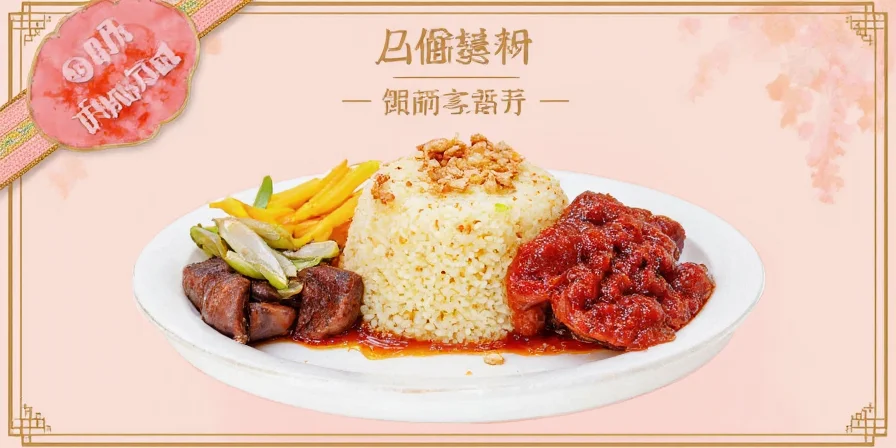Spice, Heat, and Flavor: Exploring the Global Spice Traditions Behind Typical Brazilian Food
Welcome to a flavor-packed journey into the heart of typical Brazilian food, where spices dance like samba dancers and heat hits your palate with the energy of Carnival! If you’ve ever tasted a plate of feijoada or bit into a pão de queijo, you know that Brazil’s cuisine is a vibrant blend of indigenous, African, Portuguese, and immigrant influences.
In this blog post, we’ll uncover how spice plays a starring role in shaping the iconic flavors of Brazilian dishes. Whether you're a professional chef, a home cook, or just someone who loves global spice traditions, you’re in for a flavorful ride.
Table of Contents
- Why Spices Matter in Brazilian Cuisine
- Top 5 Brazilian Dishes That Show Off Spice Like a Pro
- Brazilian Spice Cabinet: Must-Have Ingredients
- Pro Tips for Mastering Brazilian Spices at Home
- How Brazilian Spices Compare Globally
- Conclusion: Bring the Carnival of Flavor to Your Kitchen
Why Spices Matter in Brazilian Cuisine
Brazil may be known for its tropical climate, beaches, and biodiversity, but when it comes to food, it’s all about boldness and balance. The use of spices in typical Brazilian food isn’t just about heat—it’s about creating layers of flavor that reflect centuries of cultural exchange.
From the fiery malagueta pepper to the earthy notes of annatto and the smoky allure of dried chilies, spices are used both subtly and boldly across the country. What sets Brazilian cuisine apart is how these spices are integrated with fresh ingredients, meats, and legumes to create something uniquely rich yet approachable.


Top 5 Brazilian Dishes That Show Off Spice Like a Pro
- Feijoada: This black bean stew with pork is a national dish and a masterclass in balanced spicing. Garlic, bay leaves, cumin, and chili add depth without overpowering the beans and meat.
- Vatapá: A creamy paste made from bread, shrimp, coconut, and peanuts, often seasoned with chili and coriander—originating from Afro-Brazilian traditions.
- Moqueca: A seafood stew simmered with tomatoes, onions, garlic, and sometimes dendê oil (palm oil), which carries the heat beautifully.
- Picanha: Brazil’s beloved cut of beef, grilled to perfection and seasoned simply with coarse salt—but often served with spicy sauces on the side!
- Coxinha: Shredded chicken pastries often flavored with nutmeg, onion powder, and chili for an extra kick.
Brazilian Spice Cabinet: Must-Have Ingredients
If you’re ready to dive into authentic Brazilian cooking, here’s your essential spice checklist:
| Spice/Ingredient | Flavor Profile | Best Used In |
|---|---|---|
| Malagueta Pepper | Fiery, fruity heat | Soups, stews, hot sauces |
| Dendê Oil (Palm Oil) | Earthy, nutty, slightly smoky | Fish dishes, moqueca, rice |
| Annatto (Urucum) | Earthy, nutty, mildly peppery | Meats, rice, stews |
| Cumin | Warm, earthy, aromatic | Bean dishes, grilled meats |
| Bay Leaf | Subtle bitterness, herbal | Stews, soups, braises |


Pro Tips for Mastering Brazilian Spices at Home
Whether you’re new to Brazilian cooking or looking to elevate your skills, here are five practical tips that will help you unlock those bold flavors:
- Toast Before Use: Toast annatto seeds or whole cumin in a dry pan before grinding them. This releases their natural oils and enhances their aroma significantly.
- Balancing Act: Don’t go overboard with heat. Brazilian dishes rely on a balance between spice, acidity, and sweetness. Add a splash of lime juice or a spoonful of coconut milk to counterbalance any intense heat.
- Layer Your Flavors: Start with aromatics like garlic and onion, then build layers by adding spices early in the cooking process so they infuse the entire dish.
- Use Fresh Chilies: Malagueta peppers are ideal, but if unavailable, habanero or serrano can work as substitutes. Always chop them finely to ensure even distribution of heat.
- Make Ahead: Many Brazilian dishes taste better the next day. Letting stews sit overnight allows the spices to mellow and blend together beautifully.



How Brazilian Spices Compare Globally
Let’s take a quick detour around the world to see how Brazilian spice usage stacks up against other global cuisines. While each culture has its own signature style, there’s plenty of overlap—and room to experiment!
| Cuisine | Signature Spices | Similarities | Differences |
|---|---|---|---|
| Brazilian | Malagueta, cumin, annatto, dendê | Uses bold, layered spices; fusion of indigenous and colonial influences | More focus on fresh, natural ingredients than ground spice blends |
| Mexican | Chili powders, oregano, cinnamon | Both use chili peppers heavily and have Spanish influence | Mexico leans more into complex dried chilies and smoked varieties |
| Indian | Turmeric, garam masala, mustard seed | Deep layering of spices and long roasting techniques | Brazil uses fewer spice combinations per dish; focuses more on individual impact |
| Thai | Lemongrass, galangal, kaffir lime | Balance of heat, sour, sweet, salty | Brazil doesn’t use many herbs outside of parsley and cilantro |
| Middle Eastern | Za’atar, sumac, allspice | Strong regional identity in spice use | Brazil emphasizes warmth rather than tanginess or floral notes |

Conclusion: Bring the Carnival of Flavor to Your Kitchen
There’s no denying that typical Brazilian food brings the spice—and the soul—to the table. Whether you’re experimenting with dendê oil for the first time or perfecting your pao de queijo recipe, remember that Brazilian cuisine is all about celebrating life through food.
By embracing the spice traditions rooted in Brazil’s diverse heritage, you’re not just cooking—you’re joining a culinary samba line that spans continents and centuries. So, grab your apron, stock your spice rack, and let’s turn up the heat—one delicious bite at a time.
And hey, if you mess up the spice level? Just pour yourself a cold caipirinha and laugh it off. Because that’s also very Brazilian 😉.











 浙公网安备
33010002000092号
浙公网安备
33010002000092号 浙B2-20120091-4
浙B2-20120091-4